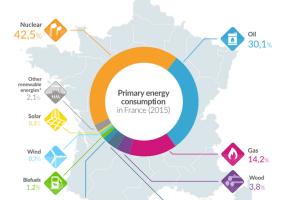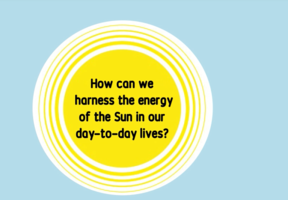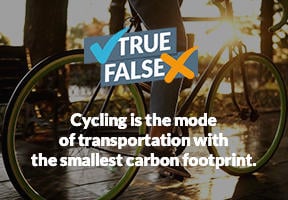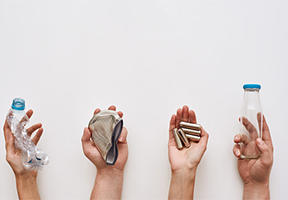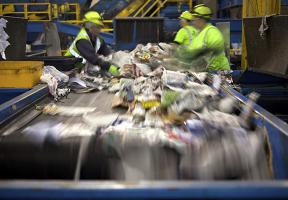France’s Single-Use Plastic Bag Regulation
Published on 04.22.201710 min read
In 2017, the French government continued to implement strict measures aimed at regulating the distribution of single-use plastic bags in stores. In 2015, 17 billion lightweight plastic bags (many used only once) were still handed out in France, and 100 billion were distributed in Europe, corresponding to an annual weight of approximately 600,000 metric tons, with each bag weighing about 6 grams.
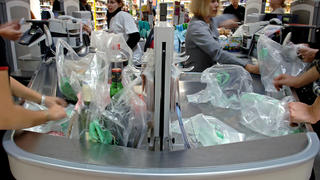
© JEAN-PHILIPPE KSIAZEK / AFP - Billion of fine plastic bags distributed in shops pose, if not reused, a real ecological problem.
Since January 1, 2017, French supermarkets have been prohibited from using plastic bags less than 50 microns thick (1 micron = 0.001 millimeter), either at the checkout or in the loose food section, where thin bags are provided for fruit, vegetables, meat and other products. An exception has been made for compostable plastic bags that are partially made from bio-based materials1.
Reusable or Not, That is the Question
The regulation introduces the concept of the plastic bag that can be used only once – defined as an ultra-thin bag less than 50 microns thick – ostensibly on the basis that a bag this thin can’t easily be used again, for trash for example. It seeks to regulate distribution by focusing on the issue of reusability. Thicker plastic bags, which often have sturdier handles, as well as traditional net bags and shopping bags, aren’t included in the ban.
Clearly, the objective is to eliminate bags that are used for a few minutes only before being discarded or, worse still, tossed into the environment. In introducing this regulation, France’s Ministry of particularly set out to combat the growing accumulation of such plastic bags in the marine environment. According to the ministry, vast areas of plastic waste have been identified in the world’s oceans, and more than 700 marine species are affected by the debris, which has been found in the stomachs of fish and birds.
The main driver behind the ban isn’t the amount of energy and water used to produce the bags, their , their ability to be recycled or their chemical toxicity, but the question of whether or not they can be reused.
According to a life cycle study, it takes the same amount of energy to make a paper bag as it does to produce a disposable polyethylene bag. The process also uses eight times more water and generates 80% to 90% more emissions. Likewise, a bag consumes as much energy during the manufacturing process as a disposable bag and produces 40% to 60% more GHG emissions. In one area, however, both get higher marks: their after they are thrown out. Regardless of what they’re made from – plastic, paper or biodegradable materials – reusable bags cause the least damage to the environment.
Compostable, Bio-based Bags
The regulation allows thin bags to be used for fruit, vegetables and other loose produce, provided that two conditions are met: they contain a minimum amount of bio-based materials and they are suitable for home composting.
Bio-based plastics, or bioplastics, are composed of polymers derived from partially or totally renewable resources, such as plants, animals, residual materials and algal . The most common feedstocks are corn, potatoes, wheat and sugarcane. From 30% today, the minimum bio-based content standard is set to rise to 40% in 2018, 50% in 2020 and 60% in 2025.
Composting is a biological process whereby organic matter, such as vegetable scraps, is converted into a rich soil-like material called humus or compost. It can be performed in backyard or neighborhood bins or take place on an industrial scale. For a plastic bag to meet the home composting requirement, it must comply with standards that are more stringent than those that apply to industrial composting.
To meet the regulatory standards, plastic bags must be both bio-based and compostable. Some products are bio-based but not compostable, such as sugarcane bags, for example.
The regulation does not refer to biodegradable plastics. Biodegradable means that a material can be broken down by the action of microorganisms, such as , fungi and algae. The biodegradation process produces water, CO2 and/or methane. It can also generate by-products, such as residues and new biomass, which are non-toxic for the environment. However, not all biodegradable plastics are compostable, whereas all compostable plastics are biodegradable.
French law also prohibits all use of oxo-fragmentable bags, which are made from polymers supplemented with transition metal salts that cause the plastic to break down into small pieces. These fragments still have a harmful impact on the environment even though they are invisible to the naked eye.
Finally, there’s one rule that everyone agrees on: no matter what they’re made of or how thick they are, plastic bags should be collected and recycled or sent to a waste-to-energy plant for and must never become a source of litter.
Sources :
- French Ministry of Sustainable Development (in French only)





